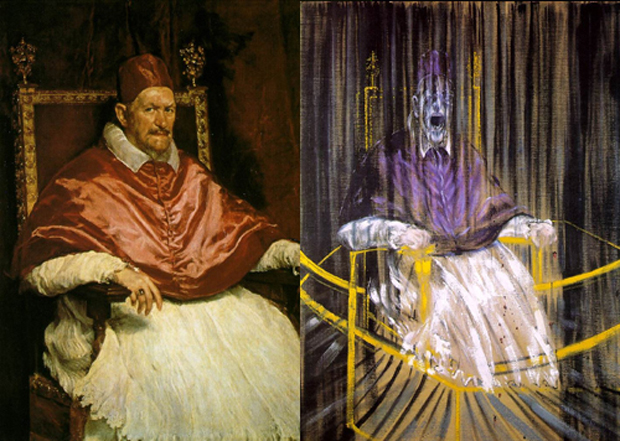Sacred, fantastical, and secular themes are all present within this St. Edward’s Fine Arts Gallery. The gallery showcases figures meant to represent folk tales. These pieces are also designed to evoke a sense of freedom as well as primitive aspects of superstition and make-believe.
Most of these pieces are derived from Mexican culture. While at the exhibit I noticed that these pieces incorporated the essence of Aztec influences ranging from sculptures to paintings. I believe the main idea here is to highlight folk art that captures the interpretations of various religions, events, and common values.

 The main focus of the painting deals with a Pope on a chair. Facial expressions are solemn with the look of a terrifying shriek. There are two lines of bright gold that go across the painting and bleeding lines run down the paper.
The main focus of the painting deals with a Pope on a chair. Facial expressions are solemn with the look of a terrifying shriek. There are two lines of bright gold that go across the painting and bleeding lines run down the paper.